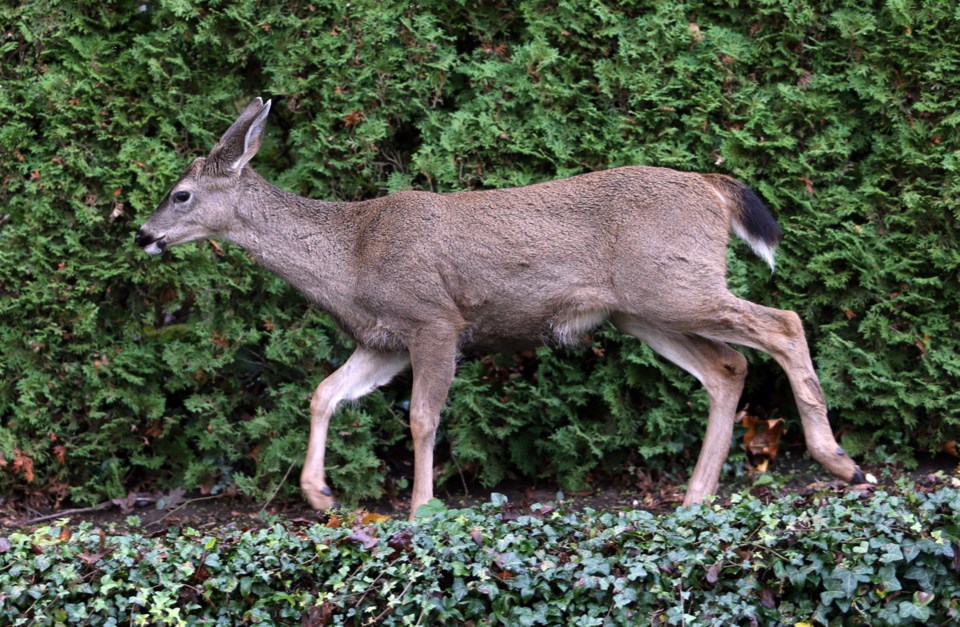The provincial government is giving Oak Bay $20,000 to outfit 20 deer with GPS tracking collars and install 40 motion-sensor cameras to photograph the animals as they wander its trails.
This is the beginning of a plan to reduce the number of deer through the use of birth-control drugs.
Oak Bay will match the provincial funds and contribute $20,000 to the first phase of the deer-management project, Mayor Nils Jensen said Thursday.
The district has partnered with the Oak Bay-based Urban Wildlife Stewardship Society to carry out phase one, which is the research portion of the project.
The wildlife group is made up of educators, wildlife biologists, zoologists, animal behaviourists and science advisers from the University of Victoria and Camosun College.
“We’re very pleased,” said Steve Huxter, the society’s project manager.
“In our application, the government was very clear there needed to be really robust scientific research, and that’s exactly what we’ve been promoting for a while.”
The money will be used to purchase 20 GPS tracking collars, which will be placed on deer in order to get daily information about their movements.
“As we collar them, we’ll also be attaching identifying ear tags as well,” Huxter said.
The money will also buy 40 motion-sensor trail cameras to take photos of deer wandering by.
“We don’t want the camera taking pictures of anything other than deer, because it takes up space on the memory cards of the cameras and battery power as well,” Huxter said.
“So we’re going to be very careful the cameras are not taking pictures of people, moving cars or that kind of thing.”
A science adviser at Camosun College is going to build a grid of the Oak Bay area and will identify known areas of deer traffic, such as the golf courses and the community gardens. Cameras will be placed there to monitor their movements.
“Ideally, we want four cameras every square kilometre,” Huxter said.
Deer will be identified by their ear tags. Some deer have unique facial features or identifying nicks or scars, he said.
A past-president of the stewardship society has photographed deer for years and compiled a portfolio identifying all the different animals.
“So we’ll take all this information from the GPS and the photographs and go to a statistician to produce a report for us,” Huxter said.
The information should provide information on the number of deer and their patterns of movement.
“It’s a much more effective way than having people go out in vehicles and try to count the deer,” he said.
Huxter said he has been talking with a local laboratory about developing a contraceptive that could last for four to five years.
“If we can do this program and apply a contraceptive for four or five years, it will stabilize the population and reduce numbers and it will be much more efficient. … It’s just a really interesting project and a lot of people are really excited about it,” Huxter said.
Jensen said he hoped to have the results in the fall, but could not say how long it might be before the contraception part of program gets underway.
“We have yet to see a budget for phase two. It will depend on whether the province comes to the table again.”
In 2015, Oak Bay carried out a deer cull that killed 11 deer in two weeks.



